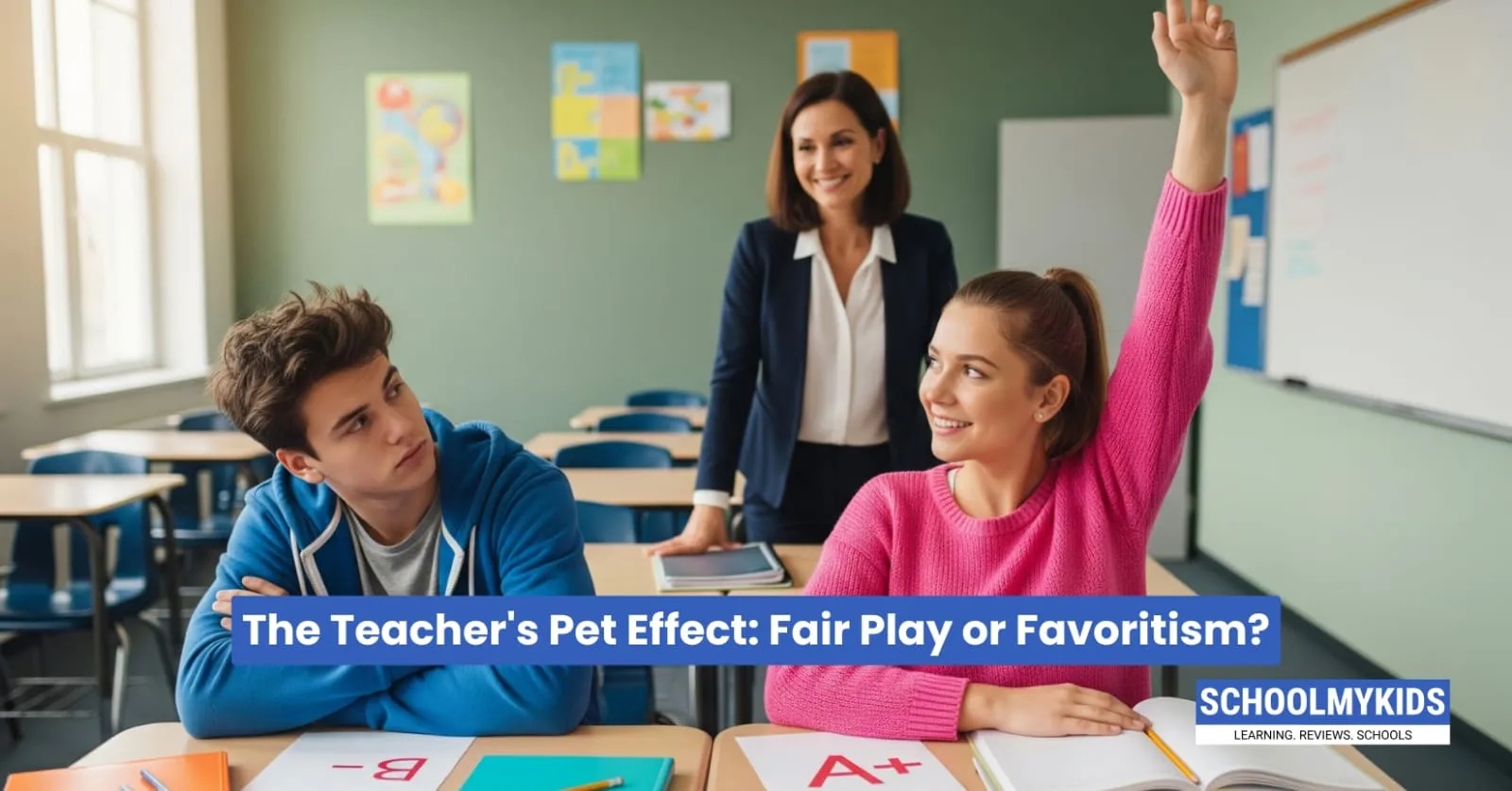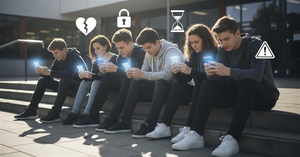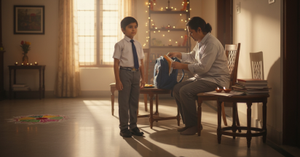We've all been there. Sitting in class, watching Anika get called on for the third time in a row while your hand has been up for five minutes. Or maybe you're the one getting those extra smiles from the teacher, and you can feel the eye-rolls from your classmates behind you. The teacher's pet effect is as old as schools themselves, and sometimes, it's complicated.
What Exactly Is the Teacher's Pet Effect?
It's when a teacher seems to show special attention, preference, or favor toward certain students. Maybe it's the kid who always sits in the front row, answers every question, or stays after class to chat. Sometimes it's the student who brings the teacher coffee or remembers their birthday. Other times, it might just be someone whose personality clicks with the teacher's.
But here's where it gets tricky: not all special attention is favoritism. Sometimes what looks like "teacher's pet" behavior is actually just good teaching or recognizing genuine effort.
How Does This Whole Thing Start?
It usually begins innocently enough. A student shows genuine interest in the subject, participates actively, or maybe just has a personality that meshes well with the teacher's style. The teacher naturally responds positively, as we all do in our relationships.
Take Mr Shukla's history class. Anika always asks thoughtful questions about World War II, stays focused during lessons, and clearly loves the subject. Mr Shukla starts calling on her more often because he knows she'll engage meaningfully with the material. Is this favoritism, or is it just natural human interaction?
The line gets blurry when other factors come into play. Maybe the teacher connects with students who remind them of themselves at that age. Or perhaps they respond better to certain communication styles. Sometimes, without even realizing it, teachers might favor students who make their job easier, like the ones who follow instructions, turn in work on time, and don't cause disruptions.
The Impact on the "Chosen Ones"
Being the teacher's pet isn't always the blessing it might seem. Yes, you might get better grades, more opportunities to speak, and extra help when needed. But there's a flip side that many don't see.
These students often feel pressure to maintain their status. They become afraid to make mistakes or show any weakness because they don't want to disappoint their teacher. Some develop anxiety about whether they're truly smart or just benefiting from favoritism.
Then there's the social cost. Other students might exclude them, call them "suck-ups," or assume they don't deserve their achievements. This can lead to loneliness and self-doubt. Many teacher's pets report feeling like they have to choose between their relationship with the teacher and their friendships with classmates.
What About Everyone Else?
For students on the outside looking in, the teacher's pet effect can feel deeply unfair. They might start believing that success in school isn't about effort or ability, but about playing politics or having the "right" personality. This can lead to decreased motivation. Why try hard if the teacher already has their favorites?
Some students become resentful, not just toward the teacher, but toward their "favored" classmates. This creates tension in the classroom and can damage friendships. Others might try to become teacher's pets themselves, changing their authentic behavior to get attention.
The most concerning impact is when students start believing they're not capable or worthy of recognition. If you never get called on or praised, it's easy to think you're not smart enough, even when that's not true at all.
The Teacher's Side of the Story
Most teachers don't wake up thinking, "I'm going to play favorites today." They're human beings trying to manage 20-30 different personalities while delivering lessons and maintaining order. They naturally connect better with some students than others, just like we all do with different people in our lives.
Teachers often face impossible situations. If they don't call on the quiet student, they're accused of ignoring them. If they do call on them and the student struggles, they're putting them on the spot unfairly. If they call on the eager student, they're showing favoritism. If they don't, they're stifling engagement.
Many teachers also argue that responding positively to students who show interest and effort isn't favoritism; it's supporting good behavior. They're trying to encourage the habits that lead to success.
When Does Fair Play Become Favoritism?
The line between appropriate teacher behavior and problematic favoritism often comes down to equity and transparency. Fair play might look like:
- Recognizing students who put in genuine effort, regardless of ability level
- Calling on different students throughout the class period
- Offering extra help to anyone who needs it
- Being transparent about how grades are determined
Favoritism crosses the line when:
- Only certain students get opportunities to participate or excel
- Grades seem to be influenced by personal relationships rather than academic performance
- Rules are applied differently to different students
- Some students are consistently ignored or dismissed
Are Kids Just Being Paranoid?
Sometimes, yes. Adolescents are naturally focused on fairness and can be hypersensitive to perceived slights. What feels like favoritism might actually be a coincidence, or a teacher trying to encourage a struggling student.
But students' perceptions matter, even when they're not entirely accurate. If the majority of a class feels that favoritism is happening, it affects the learning environment regardless of the teacher's intentions.
How Parents Can Help
Parents can play a crucial role in helping their children handle these situations:
- Listen without immediately taking sides. Your child might be experiencing real favoritism, or they might be misinterpreting normal teacher behavior. Ask specific questions about what's happening.
- Help them understand the teacher's perspective. Teachers are human and might connect differently with different students. This doesn't necessarily mean unfairness.
- Encourage your child to focus on their own effort and growth rather than comparing themselves to others. Remind them that their worth isn't determined by how much attention they get from one teacher.
- If favoritism seems genuinely problematic, document specific instances and consider speaking with the teacher or school administrators. But approach it as a conversation, not an accusation.
- Teach empathy for both the teacher and other students. Help your child understand that everyone has different strengths and challenges.
Conclusion
The teacher's pet effect is real, but it's not always as simple as favoritism versus fairness. Sometimes it's just human nature; we connect better with some people than others. The key is ensuring that these natural preferences don't unfairly impact educational opportunities or classroom dynamics.
For students, remember that one teacher's opinion doesn't define your worth or potential. Focus on your own learning and growth, and try to understand that teachers are people too, with their own personalities and preferences.
For teachers, awareness is everything. Regular self-reflection about classroom interactions, making conscious efforts to engage with all students, and being transparent about expectations can help minimize the negative effects of unconscious favoritism.
The goal isn't to eliminate all teacher-student connections, as those relationships are often what make school meaningful. It's about making sure that every student feels valued and has equal opportunities to succeed, regardless of whether they're the type to sit in the front row or prefer the back corner.
After all, every student deserves to feel like they matter in their classroom, not just the ones who naturally click with the teacher's style.








Be the first one to comment on this story.